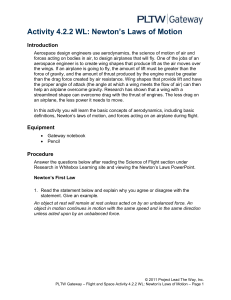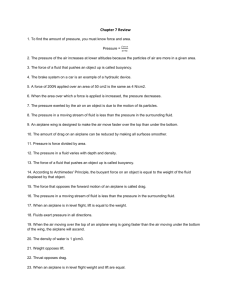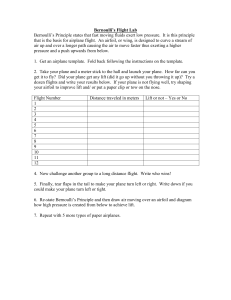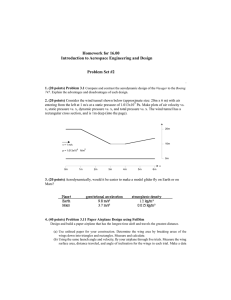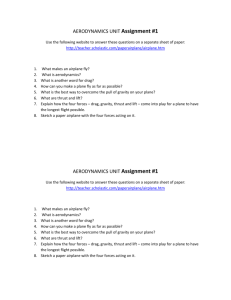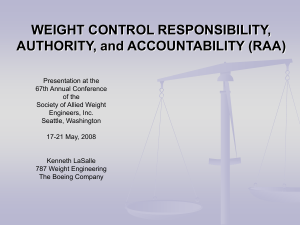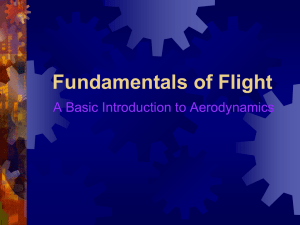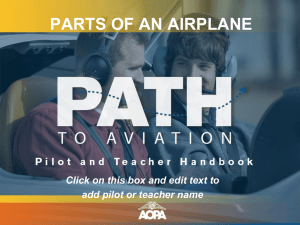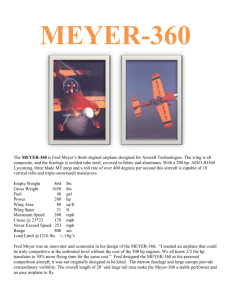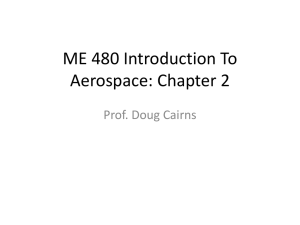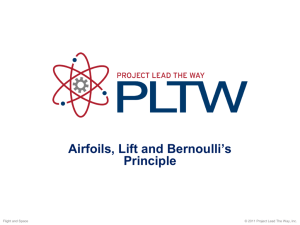test review for flight
advertisement
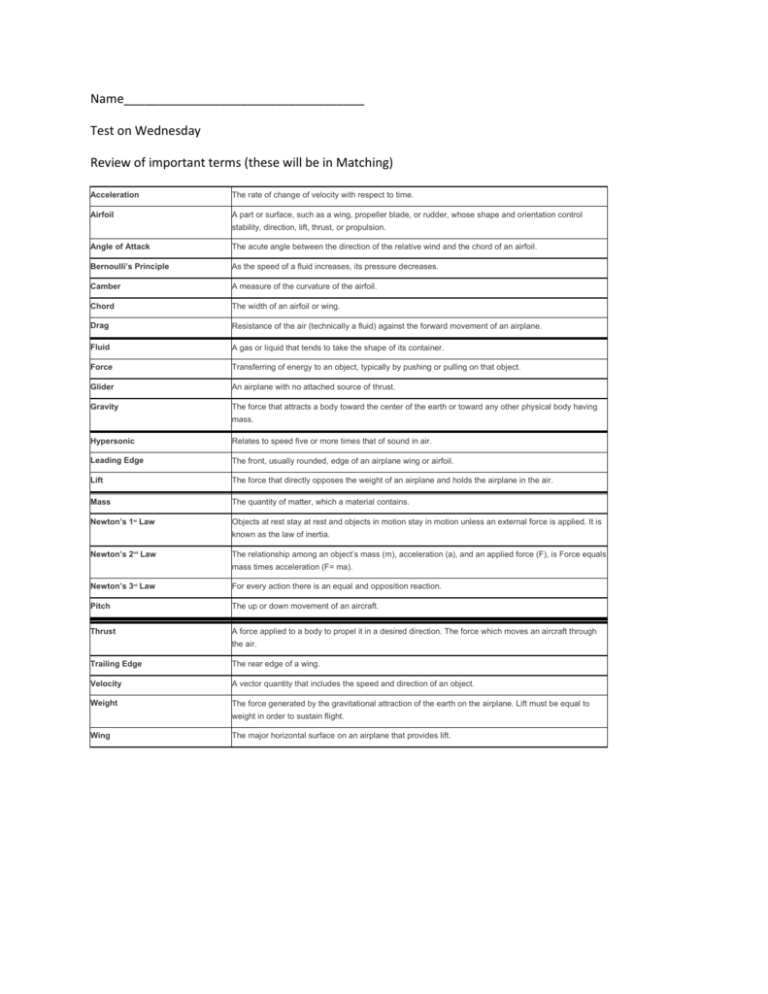
Name___________________________________ Test on Wednesday Review of important terms (these will be in Matching) Acceleration The rate of change of velocity with respect to time. Airfoil A part or surface, such as a wing, propeller blade, or rudder, whose shape and orientation control stability, direction, lift, thrust, or propulsion. Angle of Attack The acute angle between the direction of the relative wind and the chord of an airfoil. Bernoulli’s Principle As the speed of a fluid increases, its pressure decreases. Camber A measure of the curvature of the airfoil. Chord The width of an airfoil or wing. Drag Resistance of the air (technically a fluid) against the forward movement of an airplane. Fluid A gas or liquid that tends to take the shape of its container. Force Transferring of energy to an object, typically by pushing or pulling on that object. Glider An airplane with no attached source of thrust. Gravity The force that attracts a body toward the center of the earth or toward any other physical body having mass. Hypersonic Relates to speed five or more times that of sound in air. Leading Edge The front, usually rounded, edge of an airplane wing or airfoil. Lift The force that directly opposes the weight of an airplane and holds the airplane in the air. Mass The quantity of matter, which a material contains. Newton’s 1st Law Objects at rest stay at rest and objects in motion stay in motion unless an external force is applied. It is known as the law of inertia. Newton’s 2 Law nd The relationship among an object’s mass (m), acceleration (a), and an applied force (F), is Force equals mass times acceleration (F= ma). Newton’s 3 Law For every action there is an equal and opposition reaction. Pitch The up or down movement of an aircraft. Thrust A force applied to a body to propel it in a desired direction. The force which moves an aircraft through rd the air. Trailing Edge The rear edge of a wing. Velocity A vector quantity that includes the speed and direction of an object. Weight The force generated by the gravitational attraction of the earth on the airplane. Lift must be equal to weight in order to sustain flight. Wing The major horizontal surface on an airplane that provides lift. (you will have to label this diagram) You will need to be able to do Newton’s Second Law Equations F=ma a =f/m m=f/a Let’s practice some problems: 1. The unbalanced force required to accelerate a 2.0 kg mass at 4.0 m/s2 is 2. A force of 10. N applied to a given mass accelerates it at 1.0 m/s2. Calculate the mass of the object. 3. A certain net force causes a 10. kg mass to accelerate at 20. m/s2. What is the mass of the object? 4. A mass of 10 kg has a force of 120 N at what acceleration?
